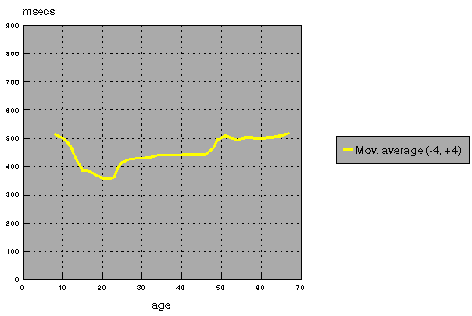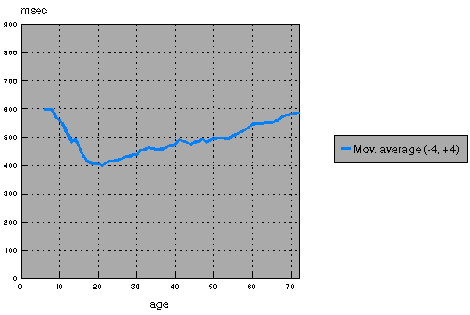Either a red or a green half square-inch block is displayed in a random sequence in either the left or right half of the screen. The testee is asked to push one of two buttons on either side of the keyboard, corresponding to the position of the coloured block on the screen. The test is ‘self-paced’ and continuous, which implies that a response is immedia- tely followed by substitution of another block in either the same or in the opposite position. After a initial practice phase of 10 stimuli, 60 stimuli are presented.
The results show accuracy and speed (in milliseconds) of responses. Evaluation of results is carried out within the context of speed of information processing and attention. This tasks presents a more complex stimulus configuration and latency times are longer than for simple reaction tasks. As can be conceived, a speed accuracy trade off exists for this task. Fast reaction times are reached at the cost of more errors. An accurate response takes somewhat more time. Reaction times and number of correct responses are weakly positively correlated (r=.20), which means that quick responses are associated with a poor accuracy score. Normative data are split up as to levels of correct responses.
Reaction times in the control group if 59 or 60 correct

Reaction times in the epilepsy group if 59 correct

Average reaction times of approximately 370 msec are considered as within the norms for a normal population of age 15-30 with an error level of 0 or 1, and 460 msec for population with epilepsy. In most subjects more than 50 of the 60 responses are correct (appro. 85%).
Two versions of the Binary Choice task exist. A fixed version and a random presentation version. The former has a semi-random presentation, but every series is the same. In the latter the order of presentation is constructed at run-time, so that every assessment is a retest with a different order. This can be handy in retesting a patient several times on the same day.
